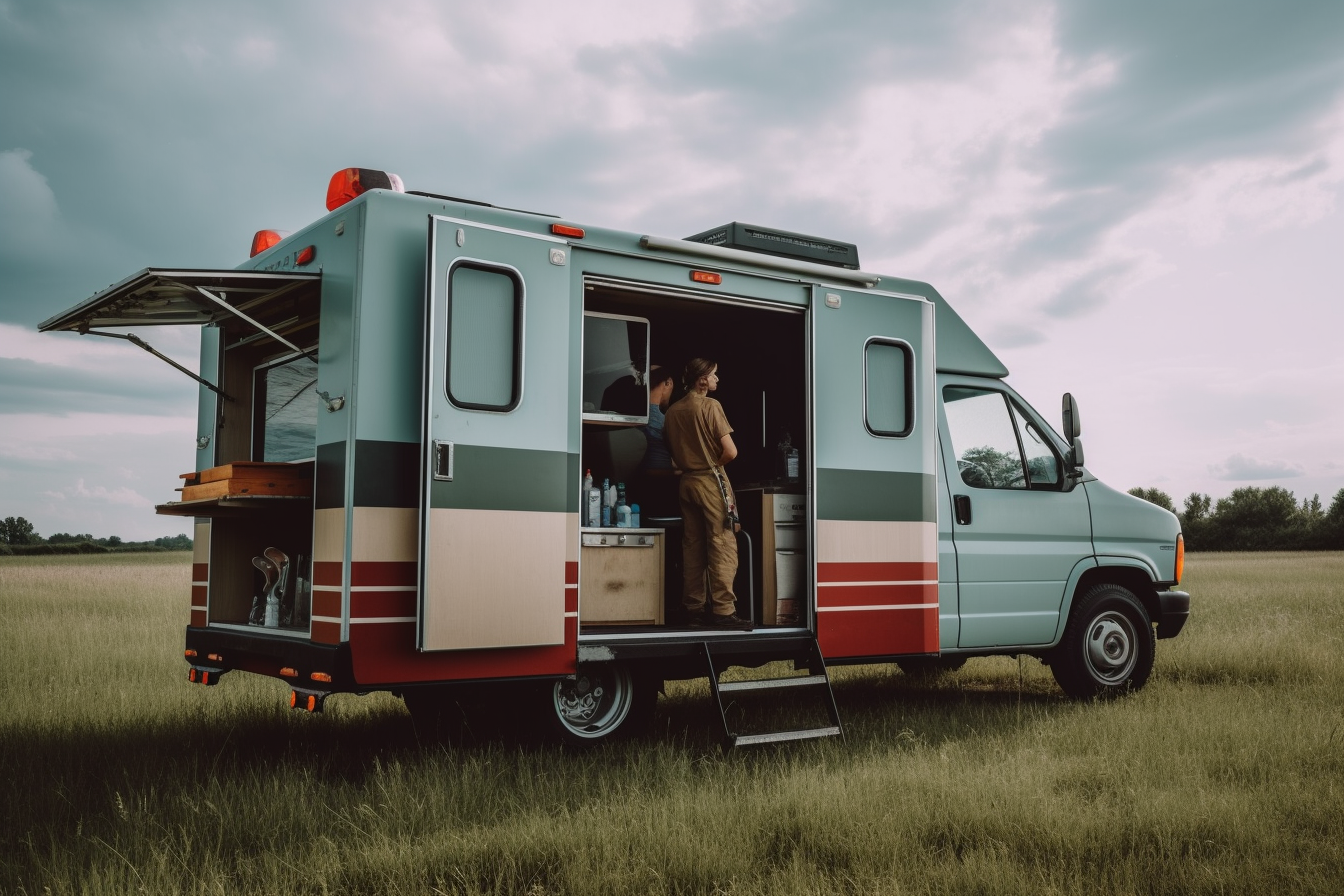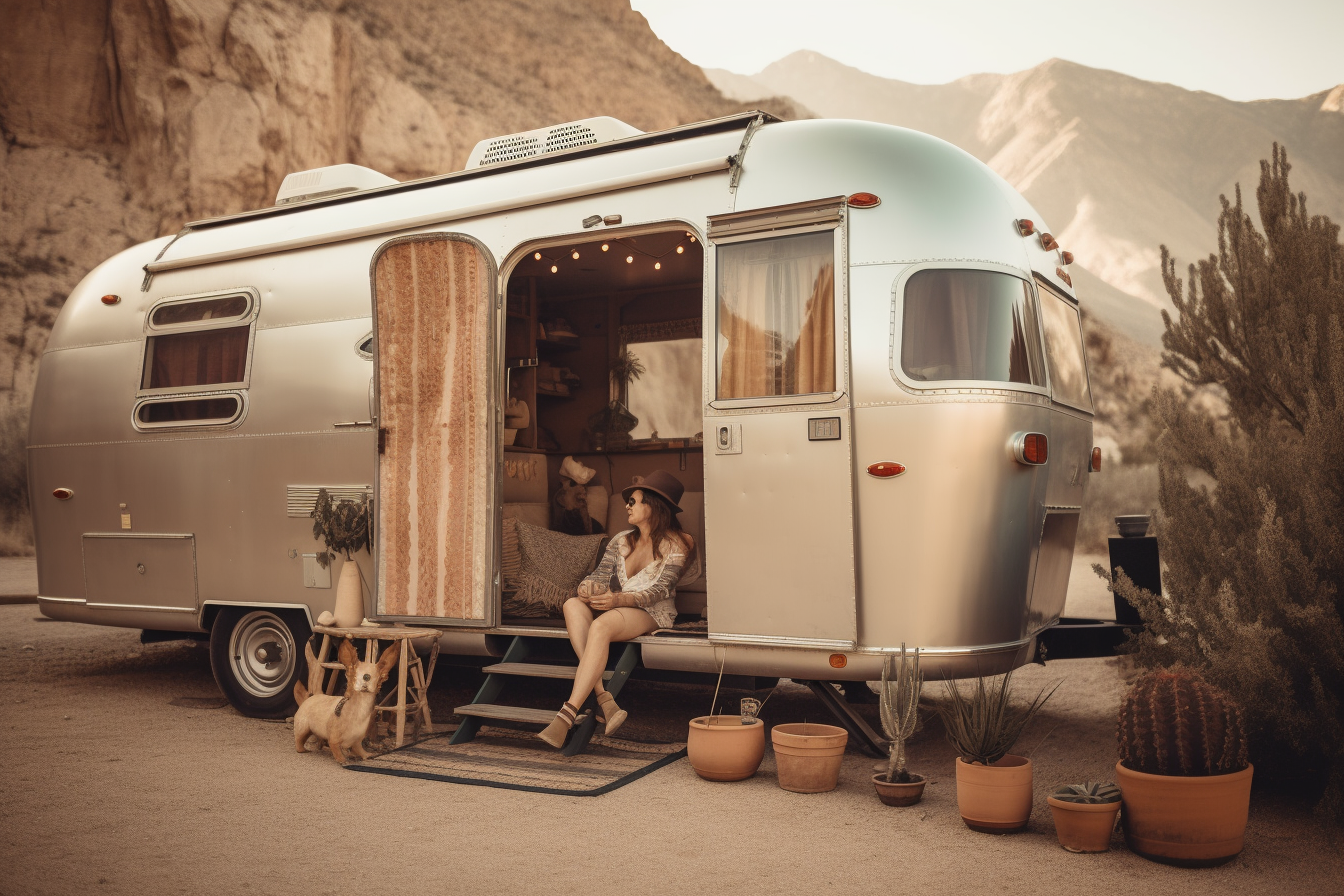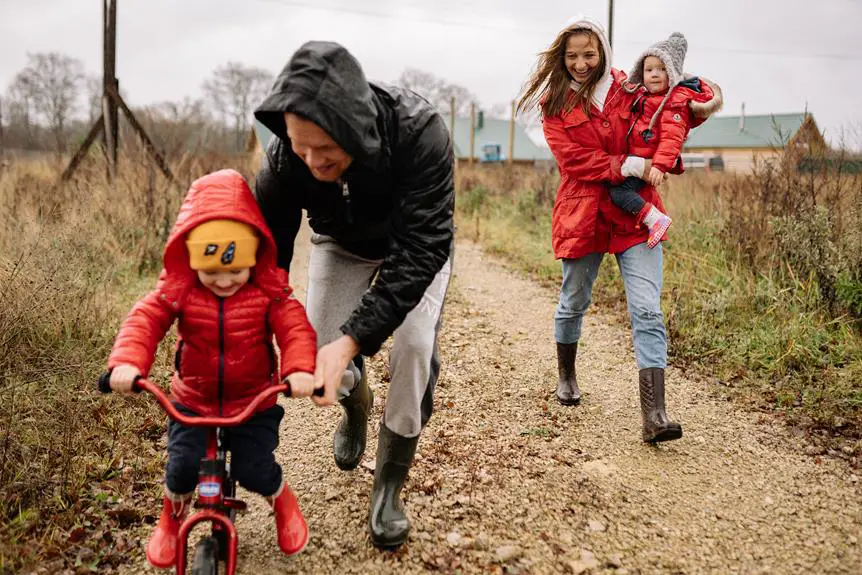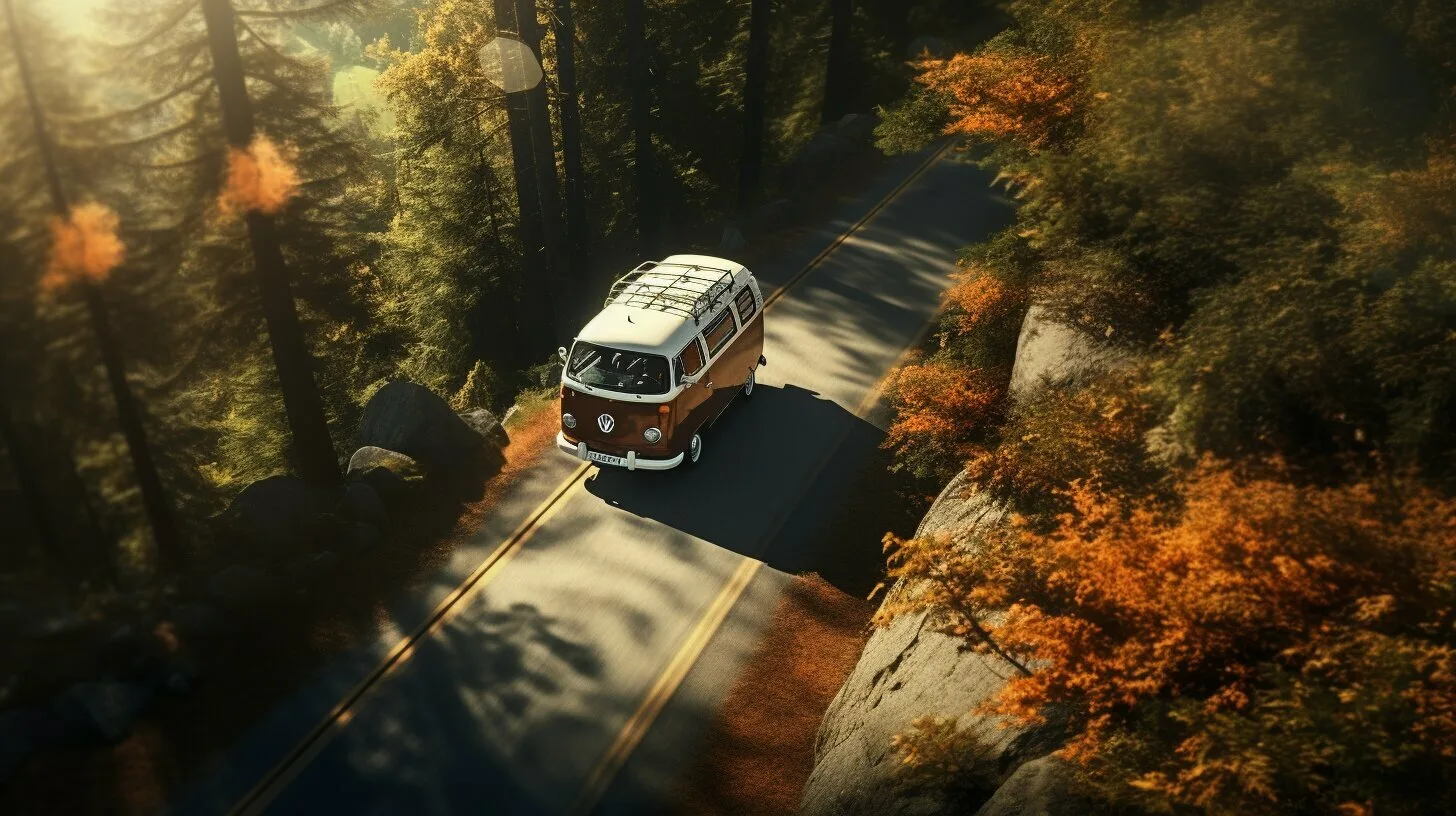Have you ever considered converting an ambulance into an RV? It may sound like an unusual choice, but it’s becoming more and more popular among adventure-seekers and budget-conscious travelers alike. However, before you dive headfirst into this unique project, there are a few pros and cons to consider.
On the one hand, an ambulance already comes equipped with many of the features you’ll need for an RV: a spacious interior, built-in cabinets and storage, and sturdy construction. On the other hand, there are some unique challenges to converting an ambulance that you may not have considered.
In this article, we’ll explore the pros and cons of converting an ambulance into an RV to help you decide if it’s the right choice for your next adventure.
What Is A Conversion Ambulance?
A conversion ambulance is a process of transforming an out-of-service ambulance into a recreational vehicle (RV) or an overland vehicle. Essentially, it involves repurposing the ambulance into a living space, complete with all the amenities of an RV or a tiny home on wheels. Ambulance conversions have gained popularity among DIY enthusiasts due to the many features that already come with the ambulance box. These features include seating, cabinets, lighting, air conditioning, insulation, and various mounting points and attachments, which make the conversion process easier and more affordable.
The converted ambulance can be used as a cross between a Class B and a Class C motorhome, providing a comfortable and practical living space on the road. Some ambulance conversions have ingenious features such as a shower, toilet, and even a hot tub, making them into an all-terrain home on wheels. The converted ambulance can also be customized to fit specific needs, such as an overland rig, a mobile office, or a camper van.
It’s important to note that all the decals that identify the ambulance as a legal emergency vehicle must be removed before converting it into an RV. Additionally, some states have specific laws and regulations regarding the conversion of ambulances, so it’s essential to research and comply with local laws before starting the conversion process.
Advantages
Converting an ambulance into an RV offers the perfect fusion of vehicle, space, and option. It eliminates the need to seek out a new recreational vehicle while making room for your imagination to run wild!
Here are some advantages that make it worth considering:
- Space – An ambulance has plenty of built-in storage and interior space compared to other vehicles, giving you more options when creating your own unique living area.
- Maintenance – Ambulances don’t require as much maintenance compared to regular RVs so you can focus on transforming it into something special.
- Budget – Converting an ambulance is significantly cheaper than buying an RV from scratch. You will get all the features already installed in the vehicle with no additional cost involved.
- Customization – Convert an ambulance exactly how you want it – install furniture, paint walls or add lighting fixtures; whatever fits your style perfectly.
- Mobility – Hit the road whenever you feel like it without having to worry about transporting a large vehicle. The mobility of ambulances makes them ideal for those who love spontaneous trips!
The opportunities here are limitless, allowing you to explore what was once just a tabletop idea with ease. With this project, you could make any dream come true in an instant!
Disadvantages
It doesn’t take a genius to recognize that there are some cons when it comes to converting an ambulance into an RV.
For starters, the space inside those ambulances is already limited – and while one might think they can expand the interior by removing all of those bulky ambulance boxes, in reality, most people don’t have enough expertise or know-how to do so safely.
Additionally, unless you’re willing to invest in customizing your platform bed from scratch, chances are you won’t be able to sleep comfortably at night because of all the electrical wiring running throughout the vehicle.
What’s more, depending on what type of ambulance you’re using for conversion purposes – even with proper maintenance – parts may not fit properly or could become loose over time due to their age and nature.
And if anything were to go wrong during this process? Chances are you’d need professional assistance from someone who understands how these specific vehicles work…which would mean having to spend extra money out of pocket just so that everything runs smoothly.
Cost
The cost of converting an ambulance into an RV will be something to consider. But don’t let this deter you from your goal!
You’ll want sturdy construction, plenty of storage, and possibly solar panels – not to mention the diesel engine that can take you wherever you need to go. All of these features come with a price tag, but it’s worth it for the adventure-seeking soul.
And if budgeting is tight, there are ways around it. For example, look for used parts or materials when possible. There might even be free items available online or at salvage yards nearby.
Additionally, many times second-hand doors and other components are half the price of new ones – so keep that in mind while shopping around! Making smart decisions on what goes into your project will ensure a successful conversion without breaking the bank.
So start researching now and create a plan based on quality over quantity – after all, you deserve only the best for your new ride!
Safety
Cost is an important factor when considering any conversion project. But safety should be a priority.
When it comes to converting an ambulance into an RV, there are many safety considerations to keep in mind:
- Air conditioning systems must be checked frequently and repaired as needed for optimal performance and reliability.
- Wiring diagrams of all types of ambulances should be studied carefully before starting the conversion process to make sure that all wiring connections are secure and up to code.
- Regular maintenance on 2 and 4-wheel drive ambulance trucks is essential, including checking fluids levels regularly, inspecting brakes and tires, and replacing worn parts.
These steps may seem overwhelming at first glance; however, they are necessary precautions to ensure your converted ambulance is safe and reliable while you’re out on the road.
With a bit of planning and research, you can rest assured that your vehicle will serve you well during your travels.
Design Layout
Converting an ambulance into an RV is like discovering a hidden gem. The Sprinter platform and Ford E-350 cutaway ambulance offer incredible potential for this transformation. With careful consideration, one can create their own masterpiece—a functional living space that caters to all of your needs.
When designing the layout, it’s important to ensure every inch of space works as efficiently as possible. This includes finding creative ways to store things without sacrificing comfort or style.
A wet bath offers great convenience in tight spaces, while custom cabinets provide plenty of storage solutions. An F-350 ambulance has roomy interiors with enough seating capacity to make everyone feel at home.
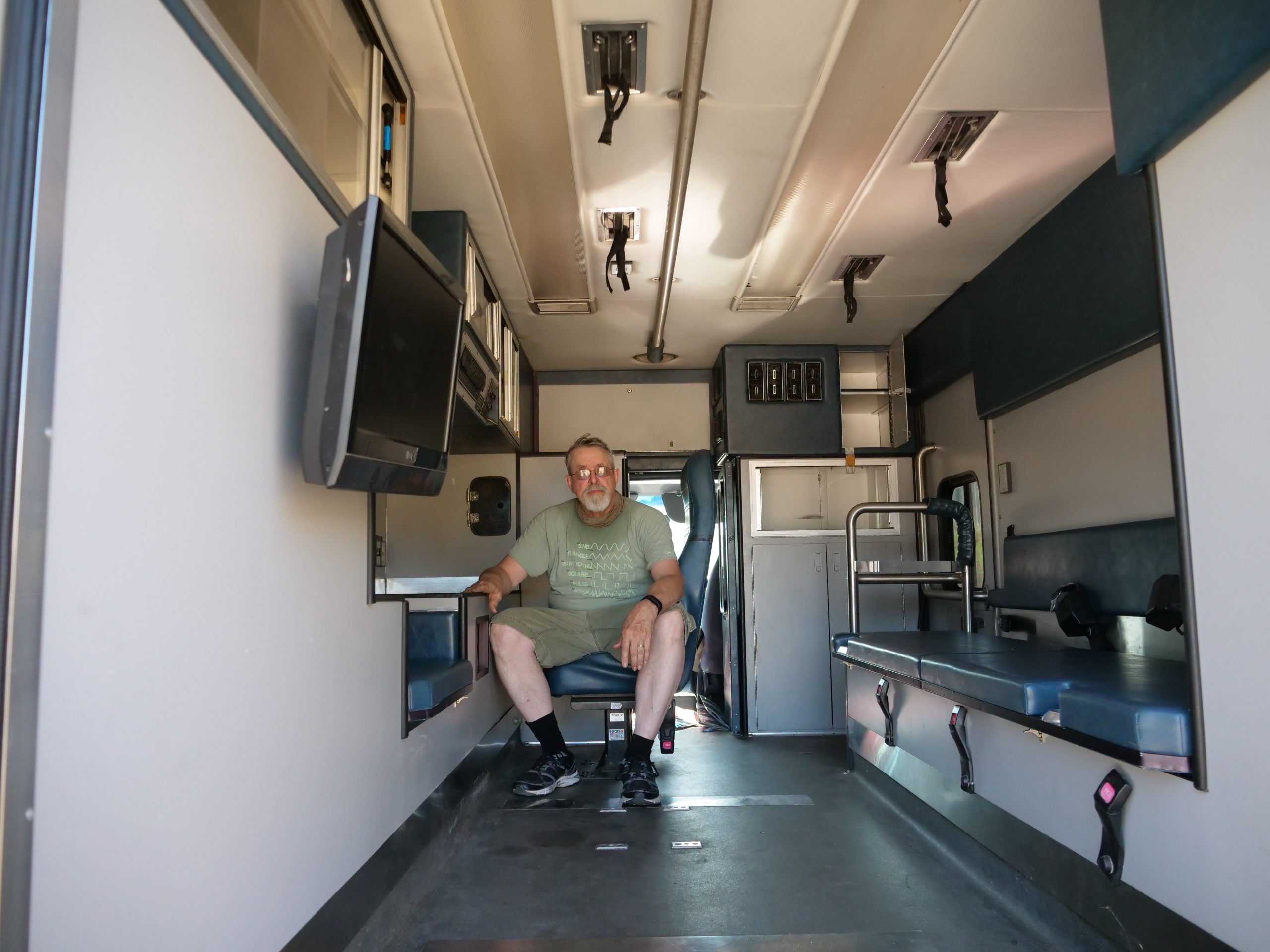
From selecting the right materials to taking advantage of natural light sources, there are countless possibilities when creating the perfect RV interior design plan. By investing time and resources into this unique project, you can transform any ordinary vehicle into something spectacular!
Interior Design
At the heart of any successful RV conversion is interior design. From showers to electrical systems, everything needs to be carefully considered and customized for maximum efficiency in your new home on wheels.
Here are some features you should consider when designing your space:
- Shower: Consider an all-in-one unit that combines a water heater with a shower stall so that you can have hot showers no matter where you’re parked.
- Electrical Systems: Invest in good quality converter/chargers, inverters, solar panels, and other components to power up your off-grid lifestyle.
- Closet Space: Maximize closet storage by outfitting them with custom drawers and shelves for easy access and organization.
- Slide-Out Table: Imagine having extra countertop or dining table space just outside of your RV – perfect for evening meals!
- Water Heater: A reliable water heater will ensure there’s always hot water available when necessary.
The possibilities are endless when it comes to creating the perfect living space inside your converted ambulance RV. With careful planning, selection of appropriate materials, and equipment, you can turn this blank canvas into something special – an innovative mobile home suited perfectly to meet your needs.
Insulation
Insulation in ambulances is an important part of the vehicle’s design and functionality. Insulation helps to keep the interior of the ambulance warm in Winter and cool and comfortable in Summer for both patient and medical personnel, while also providing sound insulation to help reduce the noise levels inside the vehicle.
Ambulance insulation is typically comprised of a combination of materials, such as fiberglass, foam, and other soundproofing materials. The insulation helps to reduce heat transfer, which can be beneficial during hot weather and long trips. It also helps to reduce noise, which is important for both patient comfort and medical personnel communication.
By insulating the interior of the ambulance, medical personnel are able to work more efficiently and with greater accuracy. Additionally, insulation helps to ensure that the ambulance’s interior temperature remains constant, which is important for providing a comfortable and safe environment for both the patient and medical personnel.
Wherever accessible, the insulation should be replaced on the ceiling and wall with a more efficient product, such as Pink XPS. This product is available in most home improvement stores and on Amazon.
Solar Power
We’ve established the importance of insulation for an ambulance-turned-RV. Now, let’s explore how to take advantage of solar power in our reworked vehicle.
Installing solar panels on an ambulance RV can be a great way to reduce energy costs and reduce the environmental impact of the vehicle. Solar panels can provide renewable energy to power the vehicle and its equipment, allowing the ambulance RV to remain operational even when running on limited resources. In addition, solar panels can help to reduce emissions, making the ambulance RV more sustainable.
The main advantage of installing solar panels on an ambulance RV is that it can provide a clean and renewable source of energy. Solar energy is free and abundant, and it can be used to power the vehicle and equipment without the need for traditional fuel sources.
The installation of solar panels on an ambulance RV also has other advantages. Solar panels can be used to provide a backup power source in the event of a power outage, ensuring that the ambulance RV remains operational. Solar panels can also help to reduce the need for fuel, as they are able to provide energy for the vehicle and its equipment. This can help to save money on fuel costs and reduce emissions.
Overall, installing solar panels on an ambulance RV can be a great way to reduce energy costs and make the vehicle more sustainable. Solar panels can provide a clean and renewable source of energy, reduce emissions, and provide a reliable backup power source. Furthermore, the installation of solar panels can help to save money on fuel costs and make the ambulance RV even more efficient.
With careful planning and execution, however, you’ll soon find yourself harnessing enough natural energy from sunlight each day to keep your modified camper running smoothly.
To put it simply: if done right, this project can transform your refurbished RV into a self-sufficient mobile paradise!
Heating And Cooling
Heating and cooling are essential components when converting an ambulance into an RV. There’s no one-size-fits-all solution for heating since it really depends on the type of vehicle you’re using – engine size, fuel source, and insulation all play a role in determining which system is best for your needs. School buses may be able to use their existing engines as a heat source, while ambulances can benefit from more efficient diesel heaters.
When it comes to cooling, roof-mounted air conditioners tend to be the most popular choice among RVers due to their ability to provide powerful airflow even in hot climates. However, they do require some modifications such as adding a bed platform or raising the bus tires off the ground by several inches before installation is possible.
Additionally, they’re often quite expensive compared to other methods like window AC units that work perfectly well with smaller rigs. No matter what route you choose though, proper ventilation is key if you want consistent comfort levels throughout your rig!
Water And Waste Management
When it comes to water and waste management, converting an ambulance into an RV requires some creative thinking.
For example, you may need to install a hidden shower or look for models with pass-through doors that allow access from both sides of the box truck.
Plumbing can be tricky due to limited space in the cab area – so make sure you plan ahead!
Additionally, finding enough room for your black and grey tanks can prove difficult unless you’re able to utilize every inch of available space within the box. These tanks are often even mounted under the box between the supports in the chassis.
With a bit of creativity and strategic planning though, this process can become much simpler – allowing you to explore new possibilities on the open road!
Electrical System
The ambulance camper conversion process is like a journey, full of self-discovery and exploration. It requires some dedication to understand the electrical system, as it could be complex for many first-time converters. However, if it’s done right, one can feel the power of innovation from within – an experience that cannot be replicated in any other way.
When converting an ambulance into an RV, it’s important to know the maintenance records since they provide valuable information on how to keep them running properly.
For example, when consulting the bus maintenance booklet states that you should check your speed lock at least once a year during your Campulance maintenance routine. This will ensure the smooth operation of the vehicle while also providing greater peace of mind knowing that all systems are working correctly.
Permits And Regulations
Now that the electrical system has been addressed, it’s time to consider permits and regulations. After all, no one wants to get into trouble for not following the rules! To ensure compliance with local laws and ordinances, research must be done from start to finish of this conversion project.
Here are a few things to consider:
- Required documents:
- Research what permits you need from your local government in order to operate an RV on public roads.
- Check any additional requirements needed for parking or camping in certain areas.
- Proper modifications:
- Make sure that any safety-related changes made are up to code e.g., rear doors should remain easily accessible in case of emergency.
- Ensure that any built-in storage (like book collections) is securely affixed within the base vehicle so as not to impede driving performance or obstruct other drivers’ view of your ambulance/RV hybrid.
- Look into options for additional storage space if desired – there may be creative ways to maximize the existing interior space without compromising safety or comfort level while driving.
The process of converting an ambulance into an RV presents its own unique set of challenges, but when approached thoughtfully by researching regulations and making necessary adjustments accordingly, these potential roadblocks can be overcome quite smoothly. With a bit of forethought and planning, anyone can enjoy their very own customized ambulance/RV combination – complete with secure storage spaces for whatever treasures they choose!
Finding And Buying An Ambulance
Finding and buying the perfect ambulance to turn into an RV doesn’t have to be difficult. Commercial vehicles like ambulances are plentiful, so finding one with plenty of space shouldn’t be a problem.
I found my 1995 F-350 ambulance on Craigslist and found many others on Facebook and Purplewave.com
It’s important to remember that larger vehicles tend to provide more options when it comes to customizing them as RVs. You’ll also need to keep in mind how much work you want to put into making the conversion happen.
Conclusion
We’ve talked about the pros and cons of converting an ambulance into an RV, plus what licenses you need and safety considerations. Now it’s time to make your dream a reality – let’s turn that old ambulance into something remarkable!
First, assess how much money you’ll have to invest in this project. It can be surprisingly affordable if you shop around for materials and do most of the work yourself. You may even find some great deals on used parts or appliances.
Don’t forget to look into local regulations; they will determine the types of features you’re allowed to install in your conversion RV, like a kitchen or bathroom.
With thoughtful planning and creativity, you can transform that dull gray ambulance into something truly special: a rolling home with all the comforts of modern living, but with its own unique character.
Picture it now: hitting the open road in style, creating memories as unforgettable as your new ride itself – all thanks to hard work and dedication along the way.
So go ahead – take that leap of faith and start crafting your very own one-of-a-kind RV today!

